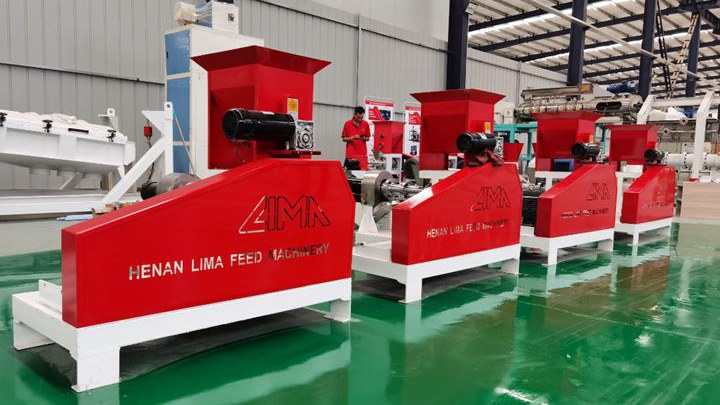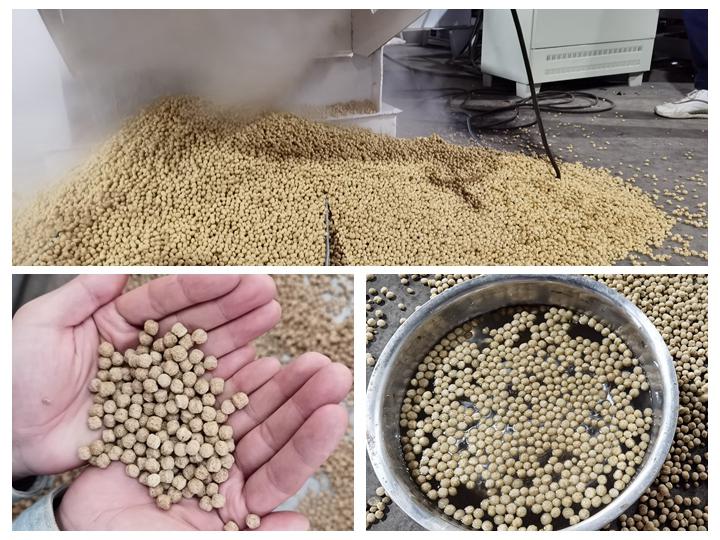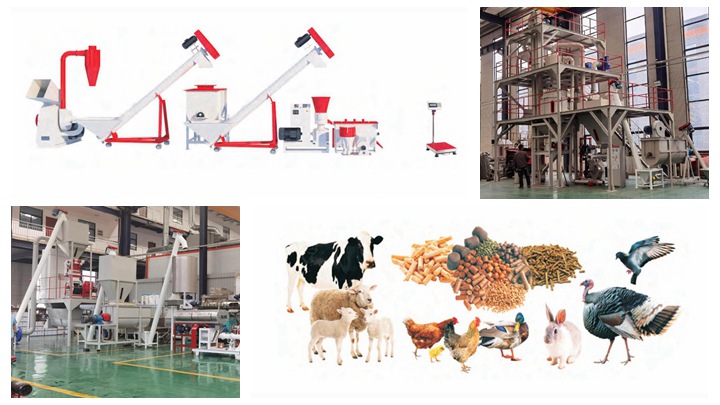
2010-12-21·13.2.1.1 Raw ingredient receipt. Feed mills receive incoming ingredients by both rail and truck (including hopper-bottom, bulk-solids and liquids trailers). Rail receiving hoppers should be designed to provide maximum capacity, but are usually relatively shallow, which constrains carrying volume. Rail and truck hoppers between …
.jpg)
Fish Feed Plant Production Process. Generally speaking, fish feed production process flow has several main steps, including procurement of feed ingredients, raw materials grinding, mixing, extruding, drying and automatic weighing and packaging, in tune with scientific and nutrient aquatic feed formulation. Acquisition of feed ingredients.
![<h3>20 t/h hour Poultry Feed Mill Plant [Turnkey Project Design]</h3>](/wp-content/themes/lima/load/51/Fish feed machine (78).jpg)
2022-12-7·Factory Capacity: Produce 20 tons feed pellets per hour (equal to 120,000 ton/year) Application: This feed milling project can process a wide range of livestock and poultry feed (chicken, duck, cattle, sheep, etc). Main Equipment: crushing machine, hammer mill, mixing machine, ring die pellet milling machine, cooling machine, packing machine ...
.jpg)
The animal feed processing project takes 2 months from civil construction to production. The animal feed manufacturing plant cost is about 50000-120000USD. This animal feed production project has a fixed workforce of 10 people, no board and lodging, three shifts, 8 hours per shift, 250 days of work per year.
.jpg)
Abstract is included in .pdf document. Fluid Catalytic Cracking (FCC) units are widely used in the oil refining industry to crack low value hydrocarbons into a range of higher value hydrocarbons including gasoline. Because of its feed processing flexibility, the FCC process is considered a primary conversion unit in an integrated refinery and ...
.jpg)
FEED or Front End Engineering Design is a critical phase in large industrial or infrastructure projects. It is conducted after the feasibility study to estimate the technical specifications, subsequent cost, and procurement needed for a project. FEED is essential for project owners to make their Final Investment Decisions for large-scale projects.
.jpg)
2010-12-21·13.2.1.1 Raw ingredient receipt. Feed mills receive incoming ingredients by both rail and truck (including hopper-bottom, bulk-solids and liquids trailers). Rail receiving hoppers should be designed to provide maximum capacity, but are usually relatively shallow, which constrains carrying volume. Rail and truck hoppers between …

Fish Feed Plant Production Process. Generally speaking, fish feed production process flow has several main steps, including procurement of feed ingredients, raw materials grinding, mixing, extruding, drying and automatic weighing and packaging, in tune with scientific and nutrient aquatic feed formulation. Acquisition of feed ingredients.
.jpg)
2010-10-5·Abstract. A literature review of Mass and Energy Balance for Plant Engineering in Food Industry is reported. Mass or materials are scarce and energy is equally scarce from economic point of view ...
.jpg)
2021-2-3·to estimate the project duration and schedule during the detailed design phase. A number of preliminary engineering documents are produced in the front-end engineering design phase (Click here to learn about all 12 phases of project implementation) which are used as the start-up documents for the detailed engineering design …

The jasmonic acid (JA) signaling pathway plays important roles in plant defenses, development, and the synthesis of specialized metabolites synthesis. Transcription factor MYC2 is a major regulator of the JA signaling pathway and is involved in the regulation of plant physiological processes and specialized metabolite synthesis. Based on our …

Abstract is included in .pdf document. Fluid Catalytic Cracking (FCC) units are widely used in the oil refining industry to crack low value hydrocarbons into a range of higher value hydrocarbons including gasoline. Because of its feed processing flexibility, the FCC process is considered a primary conversion unit in an integrated refinery and ...
.jpg)
2022-1-3·Volatile organic compounds play essential roles in plant environment interactions as well as determining the fragrance of plants. Although gas chromatography-mass spectrometry-based untargeted metabolomics is commonly used to assess plant volatiles, it suffers from high spectral convolution, low detection sensitivity, a limited …